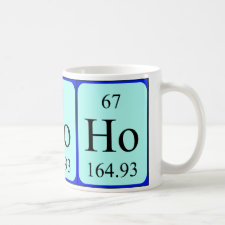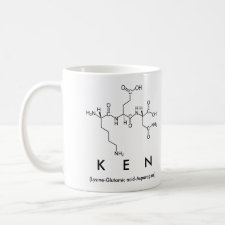
Authors: Sellergren B, Shea KJ
Article Title: Origin of peak asymmetry and the effect of temperature on solute retention in enantiomer separations on imprinted chiral stationary phases.
Publication date: 1995
Journal: Journal of Chromatography A
Volume: 690
Issue: (1)
Page numbers: 29-39.
DOI: 10.1016/0021-9673(94)00905-O
Abstract: In enantiomer separations of D- and L-phenylalanine anilide (D,L-PA) on L-PA-imprinted chiral stationary phases (CSPs), the use of an aqueous buffer-organic solvent mixture as mobile phase resulted in improved column efficiency compared with what has previously been observed using mobile phases containing acetic acid as modifier. The dependence of the chromatographic parameters on flow-rate and sample load was studied. A strong dependence of the asymmetry factor (A(s)) of the L-form on sample load and a weak dependence on flow-rate indicate that the non-linear adsorption isotherm is the main reason for the broad peaks observed in this system. Depending on the method used for the preparation of the materials, different shapes of the plots of retention and selectivity versus sample load were obtained, indicating differences in the site distribution between the polymers. A slow mass transfer was still present but this was in agreement with results from other ion-exchange separations or separations using large porous particles. The band widths of both enantiomers showed a similar dependence on flow-rate and temperature, which is in contrast to earlier reports on imprinted polymers using reversible covalent bonding in the chromatographic separation, As expected from these results, the separation factor (alpha) and the capacity factor (k') showed no or only a weak dependence on flow-rate, In a study of the effect of temperature on retention and selectivity, linear Van't Hoff plots were obtained giving Delta H and Delta S' values (binding of D- or L-PA, absolute values for the D-form and apparent values for the L-form) and Delta Delta H-app and Delta Delta S-app values (differential binding of D,L-PA) that showed an exothermic process. Changing the mobile phase pH from 7 to 4 resulted in an increase, mainly in Delta S' and Delta Delta S-app. Using an acetic acid- containing mobile phase mixture, an endothermic process was observed with positive Delta H, Delta S, Delta Delta H-app and Delta Delta S- app values. The results were interpreted in terms of extensive solvation of the solute ammonium groups, the effect being most pronounced in the acetic acid-containing mobile phase



Join the Society for Molecular Imprinting

New items RSS feed
Sign-up for e-mail updates:
Choose between receiving an occasional newsletter or more frequent e-mail alerts.
Click here to go to the sign-up page.
Is your name elemental or peptidic? Enter your name and find out by clicking either of the buttons below!
Other products you may like:
 MIPdatabase
MIPdatabase









